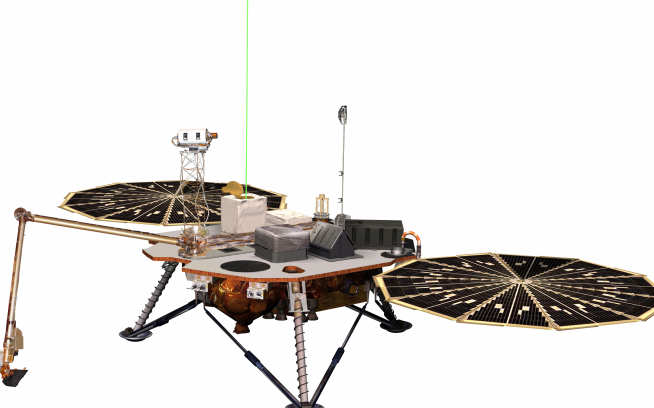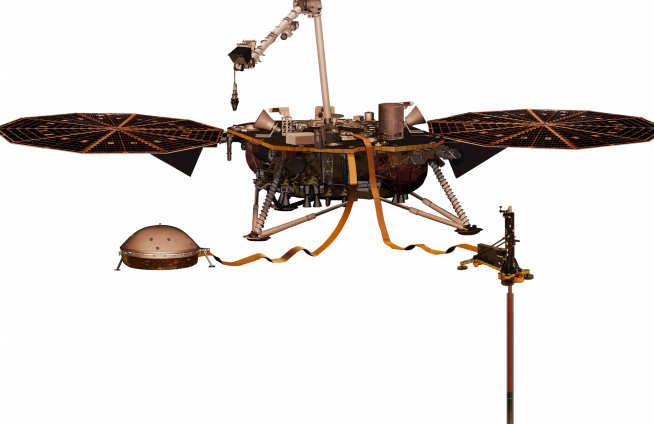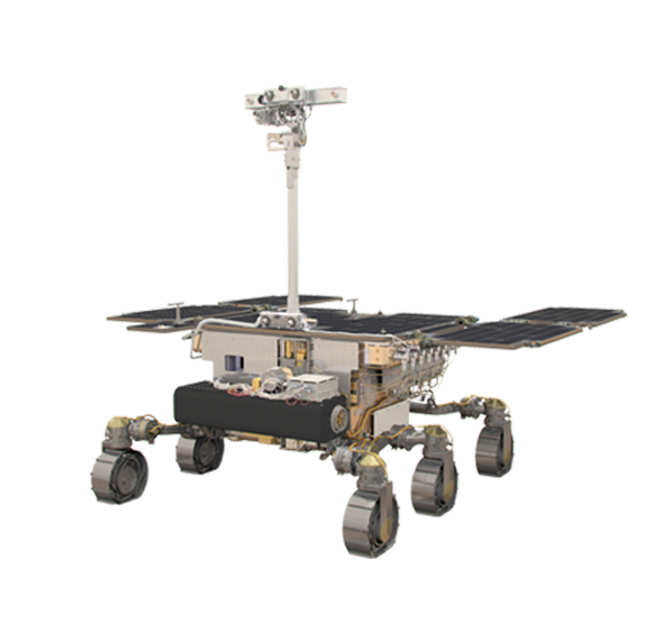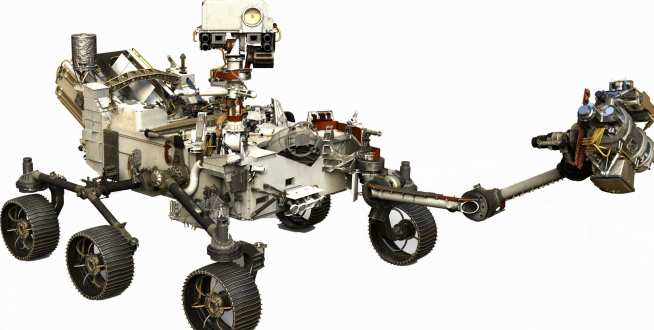Phoenix Mars Lander

Phoenix was a robotic spacecraft on a space exploration mission on Mars under the Mars Scout Program. The Phoenix lander landed on Mars on May 25, 2008. Mission scientists used instruments aboard the lander to search for environments suitable for microbial life on Mars, and to research the history of water there.
Current status: The lander completed its mission in August 2008, and made a last brief communication with Earth on November 2 as available solar power dropped with the Martian winter. The mission was declared concluded on November 10, 2008, after engineers were unable to re-contact the craft.
Imperial’s involvement: Professor Tom Pike was the only UK scientist to provide technology to help image and analyse Martian soil as part of NASA’s 2008 Phoenix Mission to Mars. Professor Pike worked on the microscope station that was included in the Phoenix payload.
Mars Science Laboratory Curiosity rover

Curiosity is a car-sized rover designed to explore Gale Crater on Mars as part of NASA's Mars Science Laboratory mission (MSL). The rover's goals include
- an investigation of the Martian climate and geology
- assessment of whether the selected field site inside Gale Crater has ever offered environmental conditions favorable for microbial life, including investigation of the role of water and planetary habitability studies in preparation for human exploration
Curiosity was launched from Cape Canaveral on November 26, 2011, and landed on Mars 6 August 2012.
Current status: The rover is still operational.
Imperial’s involvement: Professor Sanjeev Gupta, from Imperial’s Department of Earth Science and Engineering, is part of NASA’s Curiosity mission. Every day he analyses data on the geology of Mars, which is beamed back from the Mars Science Laboratory mission’s remote-controlled Curiosity rover.
NASA’s official Mars Science Laboratory Curiosity rover website
Mars InSight

InSight (Interior Exploration using Seismic Investigations, Geodesy and Heat Transport) is a Mars lander designed to give the Red Planet its first thorough check up since it formed 4.5 billion years ago. It is the first outer space robotic explorer to study in-depth the "inner space" of Mars: its crust, mantle, and core.
Current status: Landed on Mars on 26 November 2018.
Imperial’s involvement: Professor Tom Pike, from Imperial’s Department of Electrical and Electronic Engineering, is part of the Mars Insight team. The Imperial team designed and fabricated silicon sensors as part of the Seismic Experiment for Interior Structure (SEIS), which will detect tremors below the Martian surface.
ExoMars Rover

ExoMars (Exobiology on Mars) is a two-part astrobiology project to search for evidence of life on Mars, a joint mission of the European Space Agency (ESA) and the Russian space agency Roscosmos.
Current status: The programme programme comprises two missions: one consisting of the Trace Gas Orbiter plus an Entry, Descent and landing demonstrator Module (EDM), known as Schiaparelli, launched on 14 March 2016, and the other, featuring the rover, with a launch date of 2022.
Imperial’s involvement: Professor Sanjeev Gupta, from Imperial’s Department of Earth Science and Engineering, is a co-investigator on the Pancam camera team on the ExoMars 2020 mission.
Mars 2020 Rover (Perseverance and Ingenuity)

Mars 2020 is a rover mission by NASA's Mars Exploration Program. It investigates an astrobiologically relevant ancient environment on Mars, investigating its surface geological processes and history, including the assessment of its past habitability, the possibility of past life on Mars, and the potential for preservation of biosignatures within accessible geological materials.
The mission includes the rover Perseverance and the helicopter Ingenuity. The car-sized Perseverance is designed to explore the Jezero crater, and Ingenuity will be used to scout targets of interest on Mars, and help plan the best driving route for future Mars rovers.
Current status: Landing 18 February 2021.
Imperial’s involvement:
Professors Sanjeev Gupta and Mark Sephton, backed by the UK Space Agency, are part of the Perseverance team. Professor Gupta will be studying the ancient river and lake sediments exposed in the crater to reconstruct its evolution. Professor Sephton, who specialises in recognising the organic records of past life in rocks, will help the team select samples for eventual return to Earth.
Professor Tom Pike is the co-investigator of Mars 2020’s Mars Oxygen ISRU Experiment (MOXIE) payload - an exploration technology investigation that will produce a small amount of oxygen from Martian atmospheric carbon dioxide. The concept is that this technology could be scaled up in the future for human life support or to make rocket fuel for return missions.